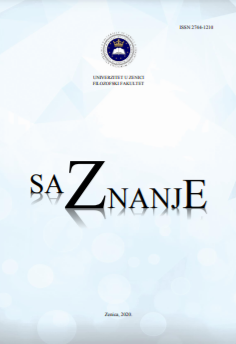SILAZNI AKCENTI NA UNUTRAŠNJIM SLOGOVIMA U GOVORU SREDNJOŠKOLSKIH UČENIKA U TRAVNIKU
FALLING ACCENT ON THE INNER SYLLABLE IN THE SPEECH OF HIGH SCHOOL STUDENTS IN TRAVNIK
Author(s): Elmedina Alić, Sanja LedićSubject(s): Phonetics / Phonology, Lexis, South Slavic Languages, School education
Published by: Filozofski fakultet, Univerzitet u Zenici
Keywords: limitation of the falling syllable; inner syllable; loan words; speech of highschool students in Travnik;
Summary/Abstract: The four-accent system is a feature of all Neo-Shtokavian varieties. However, the actual distribution of the accents in lexical and paradigmatic forms can vary significantly. Due to the complexity of the situation, the phonetic and phonological characteristics of Neo-Shtokavian accents have been a subject of disagreement since the very beginning of the research into this topic. The reasons for disagreement can be found in the following – different interpretations related to the primacy of tone or intensity and different phonological analyses. The difference between the „falling and rising“ accents is based on the tone shift within the stressed sylable. The tonal relation between the stressed and the following syllable contributes to the differentiation between these two types of accents. In words with rising accents, that syllable is much higher than in the syllable following a falling accent. These intrasyllabic and intersyllabic tonal relations commonly occur together. It has, however, been established that there are deviations from the norm pertaining to the rule that limits falling accents on the first syllable among the speakers of Bosnian and Croatian language. The objective of this paper is to establish whether the premise of commonly occurring deviations from the Neo-Shtokavian accent distribution, especially with loan words, can be proved. The occurrence of falling accent in the inner syllable of the loan words in the speech of Travnik is analysed based on research. The analysed corpus and data from two surveys ( in Bosnian and Croatian language) will illustrate the current representation of the deviation from the classical accentuation of Bosnian and Croatian language in the speech of highschool students in Travnik.
Journal: saZnanje
- Issue Year: 2/2020
- Issue No: 2
- Page Range: 80-91
- Page Count: 12
- Language: Bosnian

